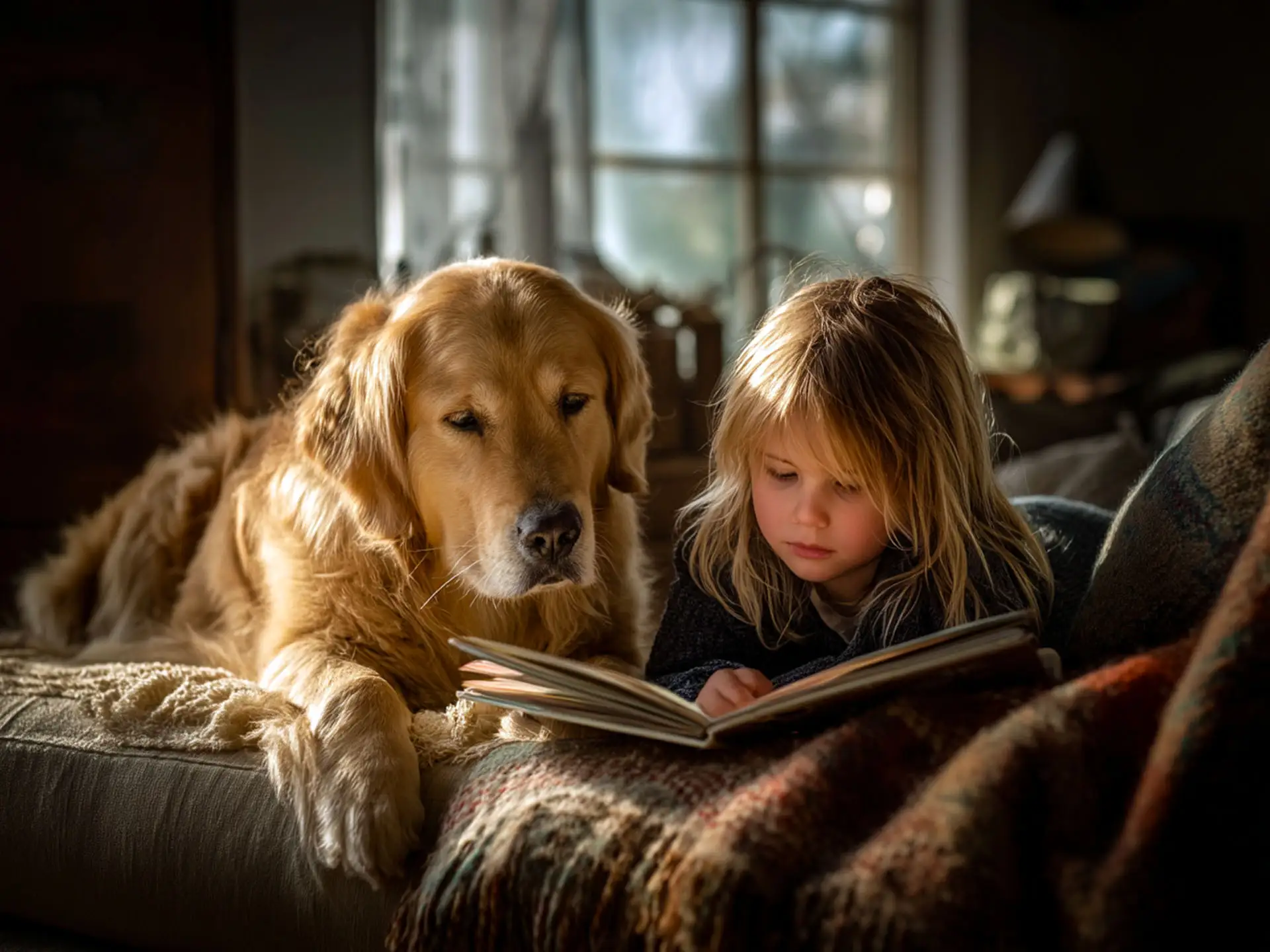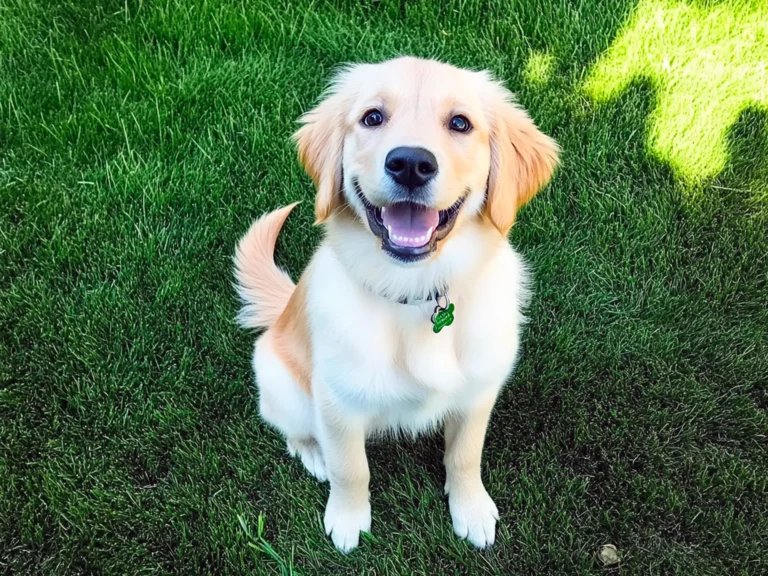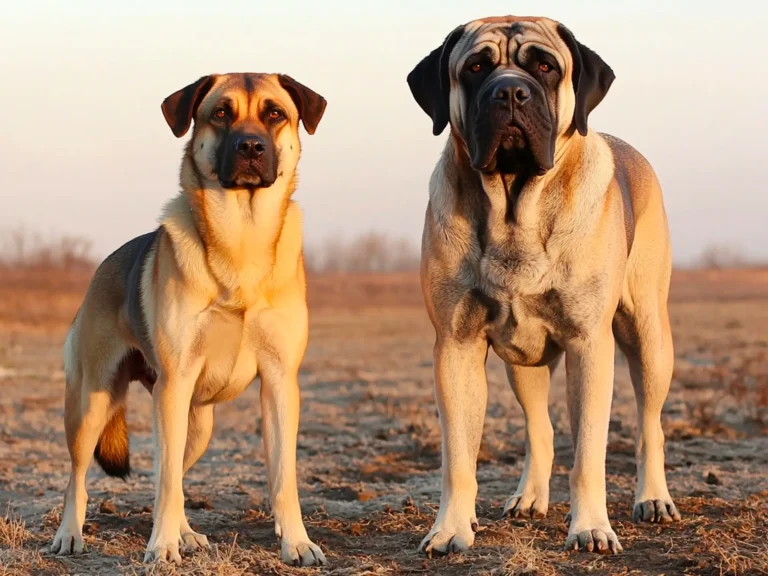A dog that greets guests calmly, walks politely on a leash, and relaxes peacefully at home is what most owners dream of. But what really makes a dog well behaved? It goes beyond learning a few tricks. A truly well behaved dog is easy to train, adaptable to different environments, shows good impulse control, and avoids problem behaviors like constant barking or chewing when its needs are met.
In this guide, we use a data informed approach combining expert insights, behavioral research, and real world owner experiences to rank the best behaved dog breeds. You will see which breeds consistently score high for trainability, calmness, and overall good manners and why training, routine, and lifestyle fit matter just as much as breed tendencies.
Whether you want a family friendly dog, a low maintenance apartment companion, or a calm and polite pup for everyday life, this list will help you find the perfect match for your home and lifestyle.
How We Ranked the Best Behaved Dog Breeds
To create a truly helpful guide, we needed a system that goes beyond opinions and popularity contests. Our ranking uses a five-pillar scoring model designed to capture the traits most owners care about when choosing a polite, easygoing dog. Each breed was evaluated on a 0–5 scale for the following traits:
- Trainability (30%) – How quickly the breed learns commands and routines using positive reinforcement.
- Calmness (20%) – Tendency to remain relaxed at home and in public when properly exercised.
- Impulse Control (20%) – Ability to resist chasing, barking, or jumping when excited.
- Adaptability (15%) – How easily the breed adjusts to new environments, people, and other pets.
- Low Nuisance Behaviors (15%) – Likelihood of avoiding habits like excessive barking or destructive chewing.
This approach combines expert insights, AKC breed standards, and real-world owner experiences. It ensures we’re not just listing friendly breeds, but highlighting those most likely to be polite companions with proper care and training.
Top 12 Best Behaved Dog Breeds
Our rankings highlight breeds known for their calm temperaments, trainability, and polite behavior in everyday life. Each breed profile shows where it shines, what owners should expect, and how it fits different lifestyles.
1. Golden Retriever
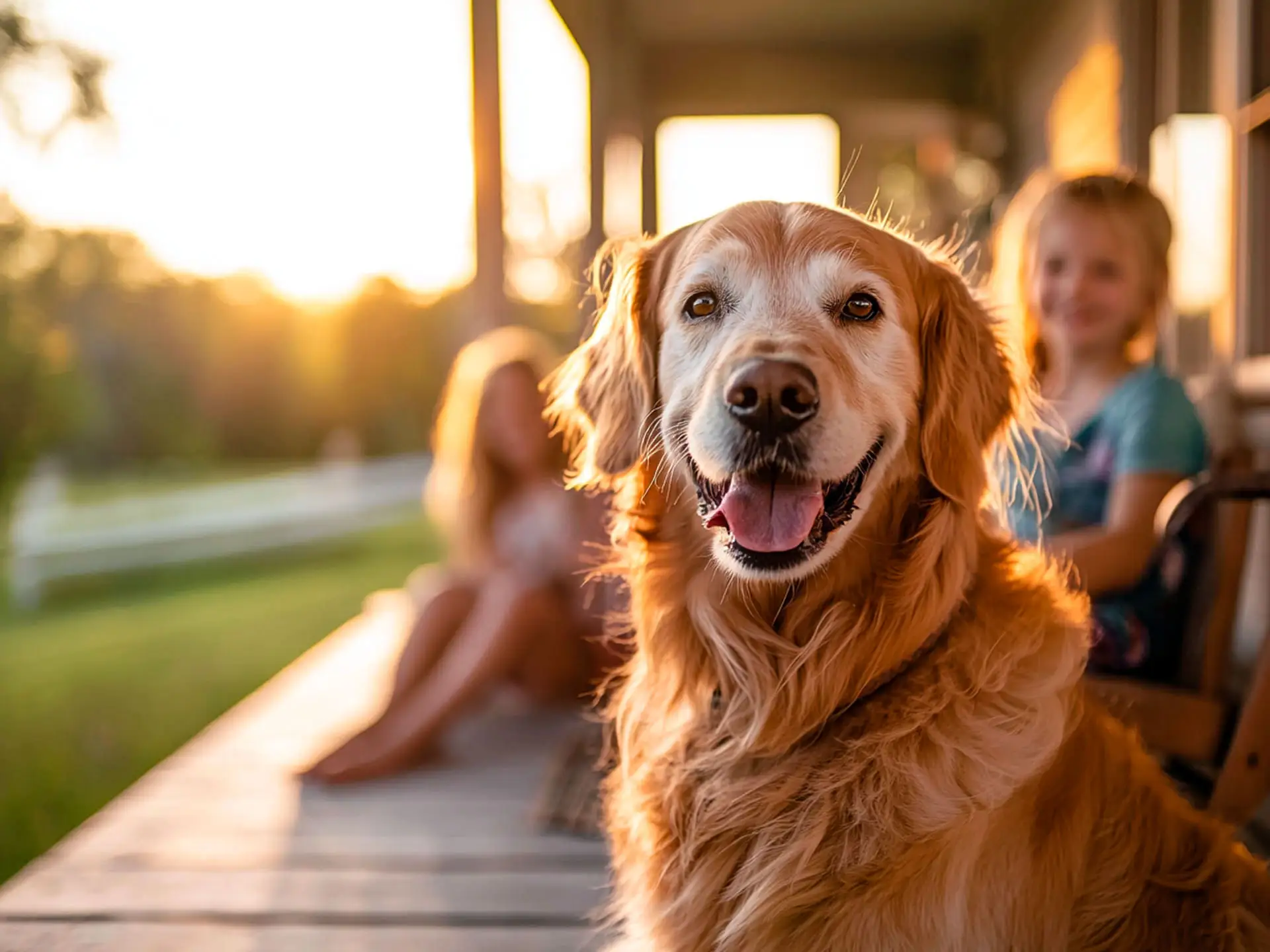
Golden Retrievers have long been considered the gold standard for well-behaved family dogs. Known for their friendly temperament and eagerness to please, they quickly adapt to household routines and thrive on positive reinforcement.
| Pillar | Score | Why it matters |
| Trainability | 5 | Learns commands quickly, excels in obedience training |
| Calmness | 4 | Stays relaxed indoors after daily exercise |
| Impulse Control | 4 | Good manners with children and guests |
| Adaptability | 5 | Fits into families, active homes, or suburban settings |
| Low Nuisance Behaviors | 4 | Rarely destructive if physical and mental needs are met |
Why They Rank High:
Golden Retrievers rarely meet a stranger they don’t like. Their combination of smarts and patience makes them easy to train, while their affectionate nature suits families with kids. Obedience trainers often highlight them as one of the easiest breeds for first-time owners.
Best For: Families, first-time dog owners, homes with kids or other pets
Potential Challenges: Needs daily physical and mental exercise to stay calm indoors
2. Labrador Retriever
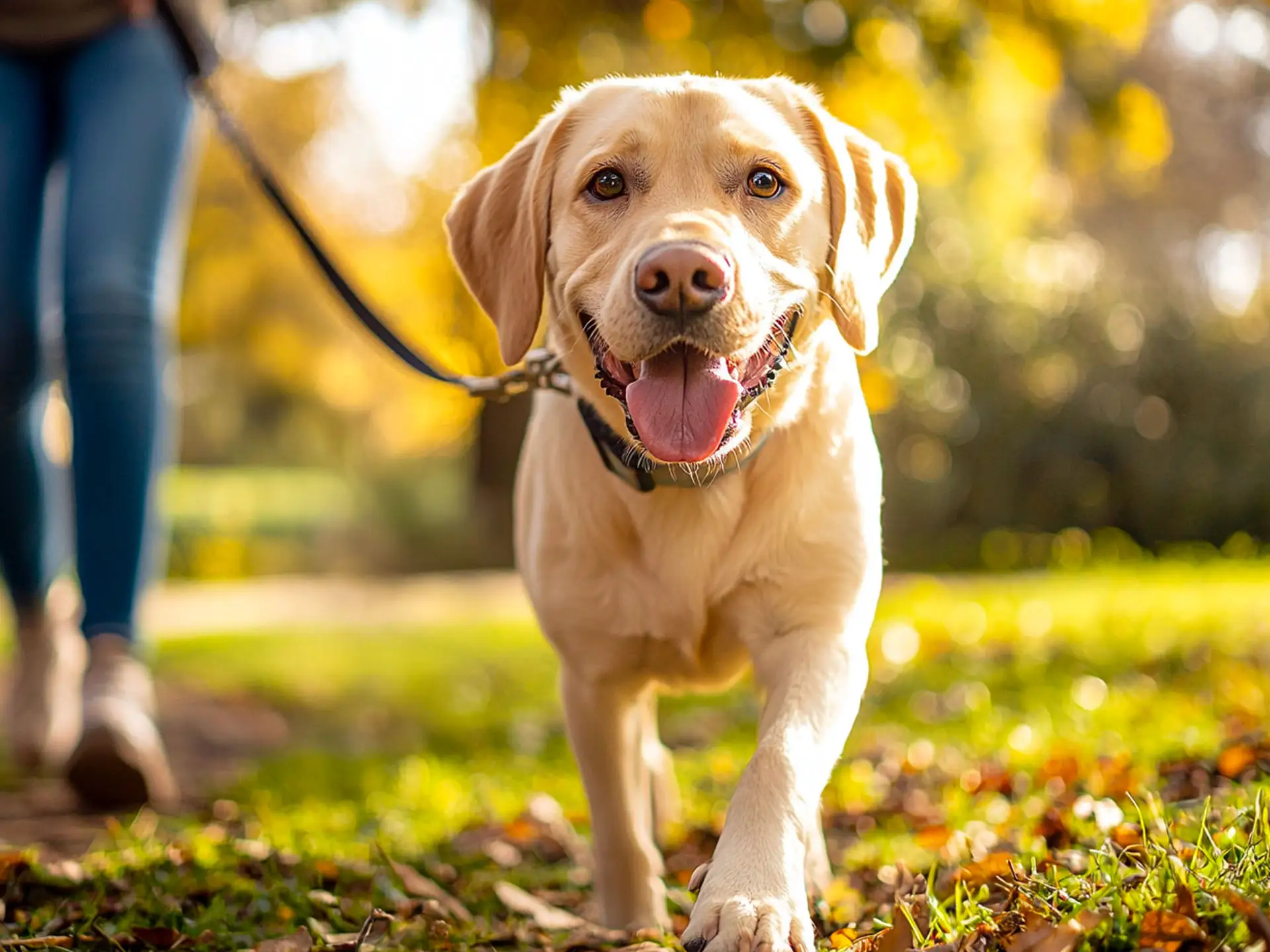
Labradors bring enthusiasm and friendliness to everything they do. Known for loyalty and adaptability, they respond well to training and love being part of family activities.
| Pillar | Score | Why it matters |
| Trainability | 5 | Food motivation makes training fast and enjoyable |
| Calmness | 4 | High energy outdoors, but relaxed after proper exercise |
| Impulse Control | 4 | Learns good manners with consistency |
| Adaptability | 5 | Thrives in families, single households, or rural settings |
| Low Nuisance Behaviors | 4 | Can bark or chew if bored, otherwise very manageable |
Why They Rank High:
Labs consistently appear in AKC training competitions thanks to their eagerness to please. With early socialization, they balance playfulness with good household behavior, making them favorites for therapy dog programs and family homes alike.
Best For: Active families, homes with yards, people seeking a friendly companion
Potential Challenges: Needs structured exercise to prevent hyperactivity
3. Poodle (Standard and Miniature)

Poodles are often underestimated beyond their elegant appearance, but trainers praise them as one of the most intelligent breeds in the world. They combine mental sharpness with a cooperative nature, leading to excellent manners when trained properly.
| Pillar | Score | Why it matters |
| Trainability | 5 | Among the fastest learners of all dog breeds |
| Calmness | 4 | Alert but not typically hyper indoors |
| Impulse Control | 4 | Good self-control with consistent training |
| Adaptability | 4 | Adjusts to apartments or houses if exercise needs are met |
| Low Nuisance Behaviors | 4 | Low-shedding coat, minimal destructive habits with mental enrichment |
Why They Rank High:
Their intelligence means Poodles pick up commands and house rules quickly. Miniature Poodles excel in small homes, while Standard Poodles offer calm companionship for active families. Their low-shedding coat also makes them appealing to allergy-sensitive owners.
Best For: Allergy-prone households, owners seeking trainability and adaptability
Potential Challenges: Needs mental stimulation to prevent boredom-driven mischief
4. Cavalier King Charles Spaniel
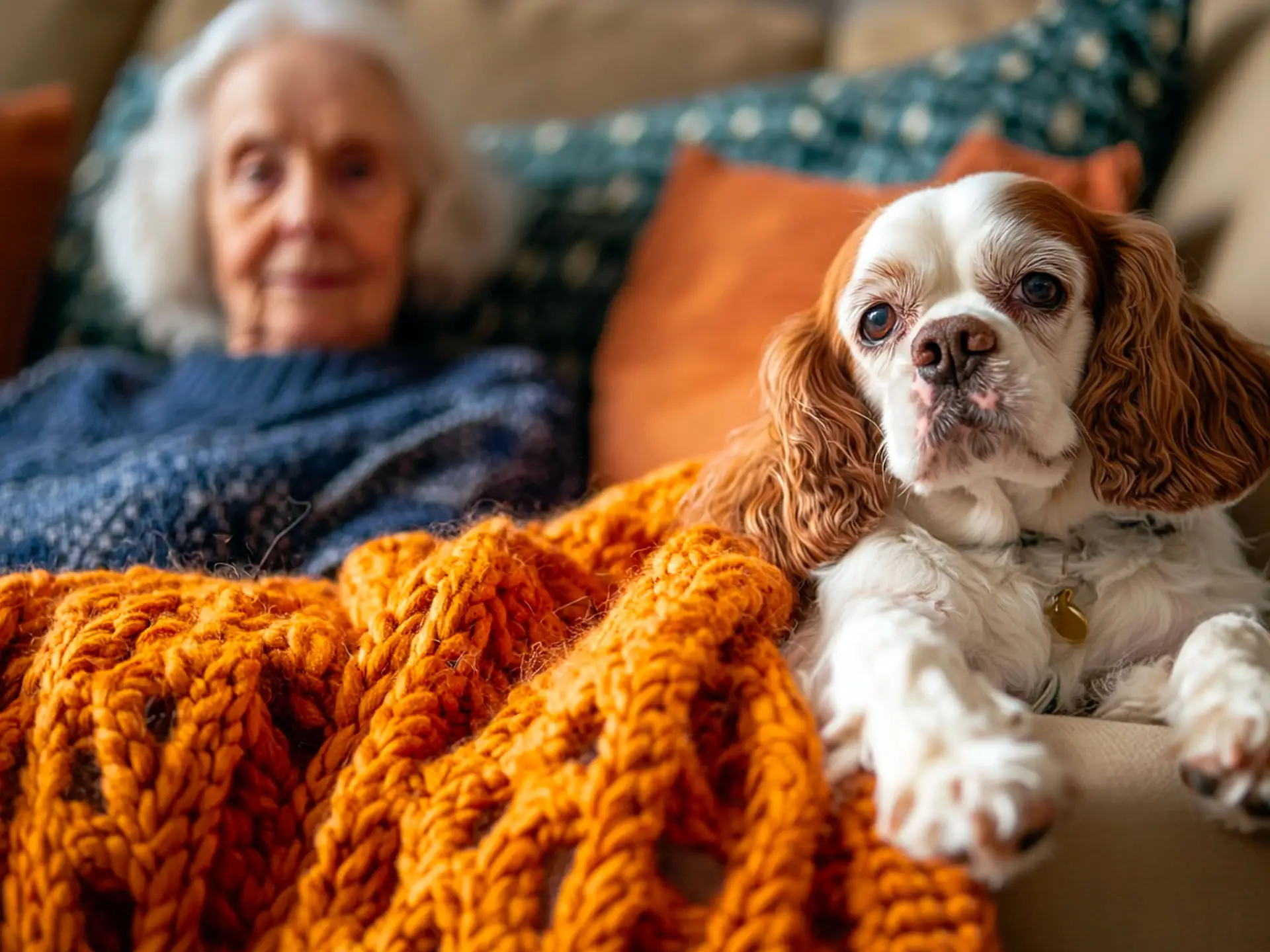
Cavaliers are small, affectionate, and thrive on human companionship. They’re gentle, quiet, and easy to train, making them excellent companions for families or seniors.
| Pillar | Score | Why it matters |
| Trainability | 4 | Eager to learn basic commands |
| Calmness | 5 | Relaxed indoors, enjoys cuddling and quiet time |
| Impulse Control | 4 | Naturally polite when socialized early |
| Adaptability | 4 | Fits apartments, suburban homes, and family life |
| Low Nuisance Behaviors | 4 | Rarely barks excessively if trained early |
Why They Rank High:
Their small size and affectionate nature make them low-maintenance companions who thrive in calm households. They are especially popular with retirees and families seeking a quiet yet loving pet.
Best For: Apartment dwellers, families, seniors seeking companionship
Potential Challenges: Prone to separation anxiety if left alone too often
5. Bernese Mountain Dog
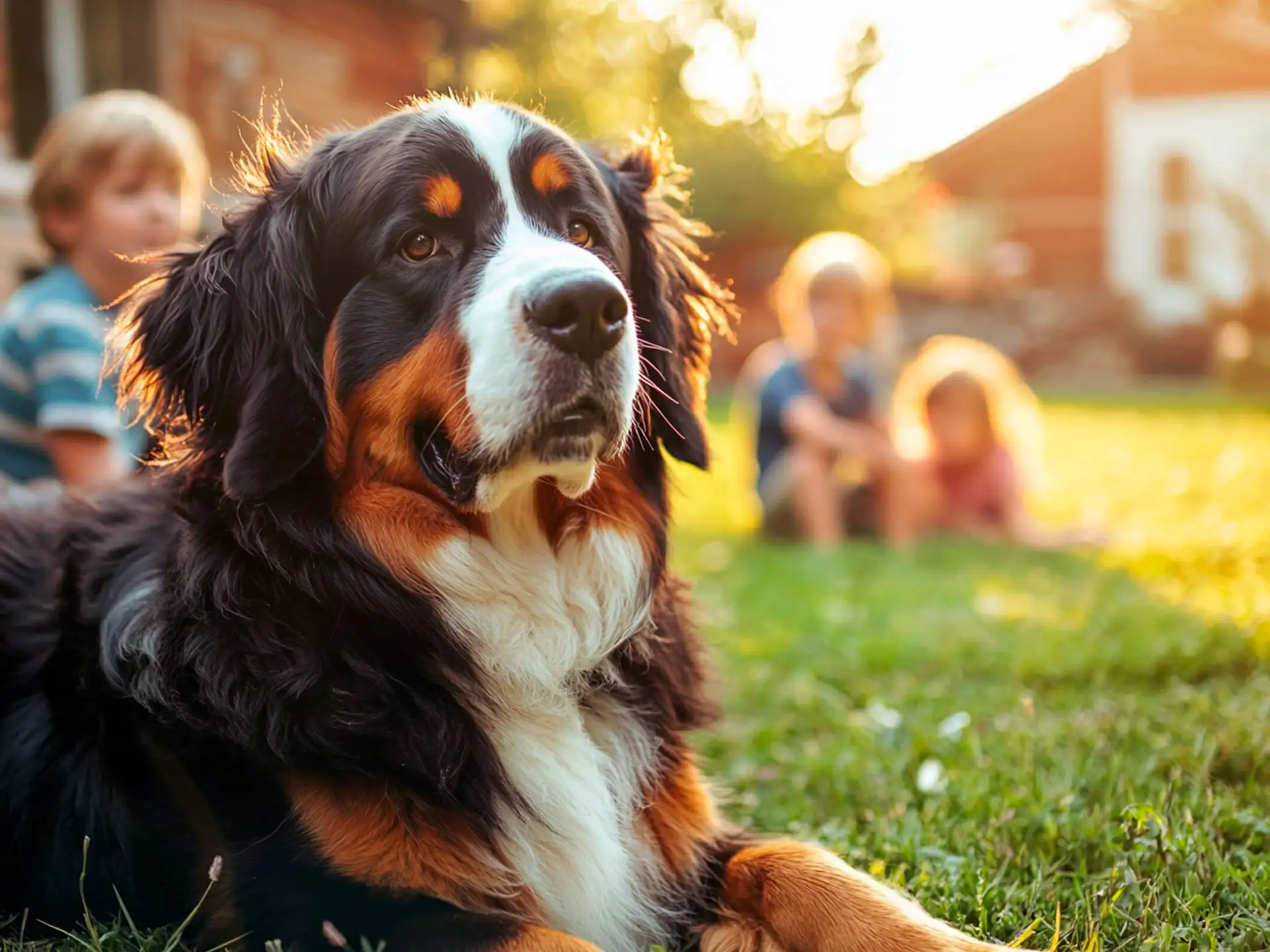
Bernese Mountain Dogs are calm, loyal, and gentle giants. Despite their size, they are known for patience and steady temperaments, especially with children.
| Pillar | Score | Why it matters |
| Trainability | 4 | Responds well to positive training methods |
| Calmness | 5 | Naturally mellow indoors with proper exercise |
| Impulse Control | 4 | Rarely hyperactive, good self-control around kids |
| Adaptability | 4 | Thrives in rural or suburban homes with space |
| Low Nuisance Behaviors | 4 | Low barking tendency, minimal destructiveness when needs are met |
Why They Rank High:
Their affectionate nature and patient temperament make them reliable family companions. They are content to relax indoors after outdoor time, offering loyalty without demanding constant activity.
Best For: Families with space, owners seeking a calm and steady companion
Potential Challenges: Large size requires adequate space and care
6. Shetland Sheepdog
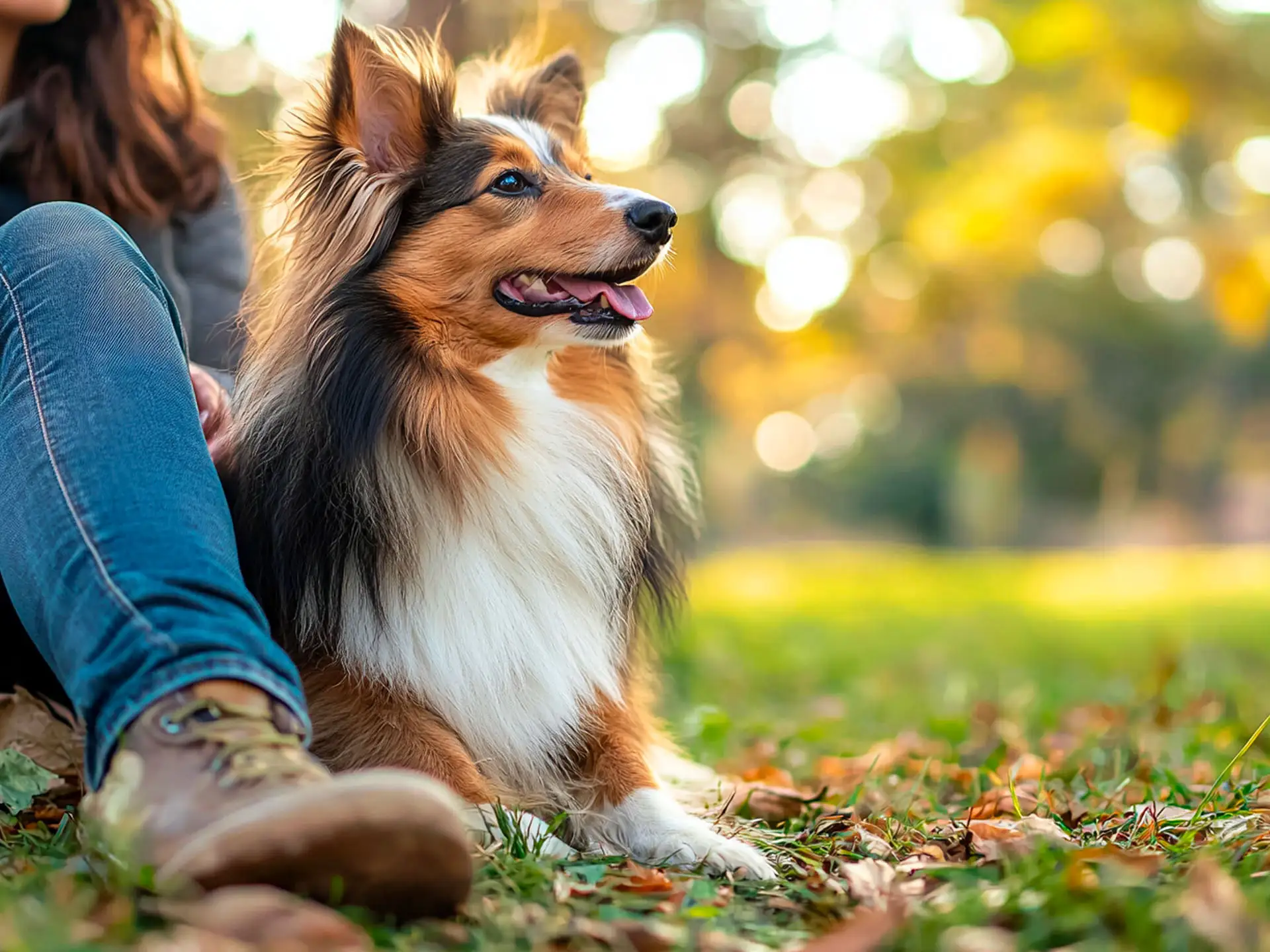
Shetland Sheepdogs, or Shelties, are highly intelligent and eager to work with their owners. Their quick learning ability and affectionate nature make them well-mannered companions when given proper training and stimulation.
| Pillar | Score | Why it matters |
| Trainability | 5 | Learns commands quickly and excels in obedience competitions |
| Calmness | 4 | Relaxed indoors after mental and physical exercise |
| Impulse Control | 4 | Focused and responsive with training |
| Adaptability | 4 | Thrives in families and active homes |
| Low Nuisance Behaviors | 4 | Minimal barking with early training, otherwise can be vocal |
Why They Rank High:
Shelties love to please and excel at obedience and agility sports. With consistent training, they develop outstanding manners and thrive in family environments. Their loyalty and intelligence make them a joy to live with.
Best For: Active families, owners who enjoy training and mental challenges
Potential Challenges: Needs regular exercise and mental stimulation to prevent boredom
7. Greyhound
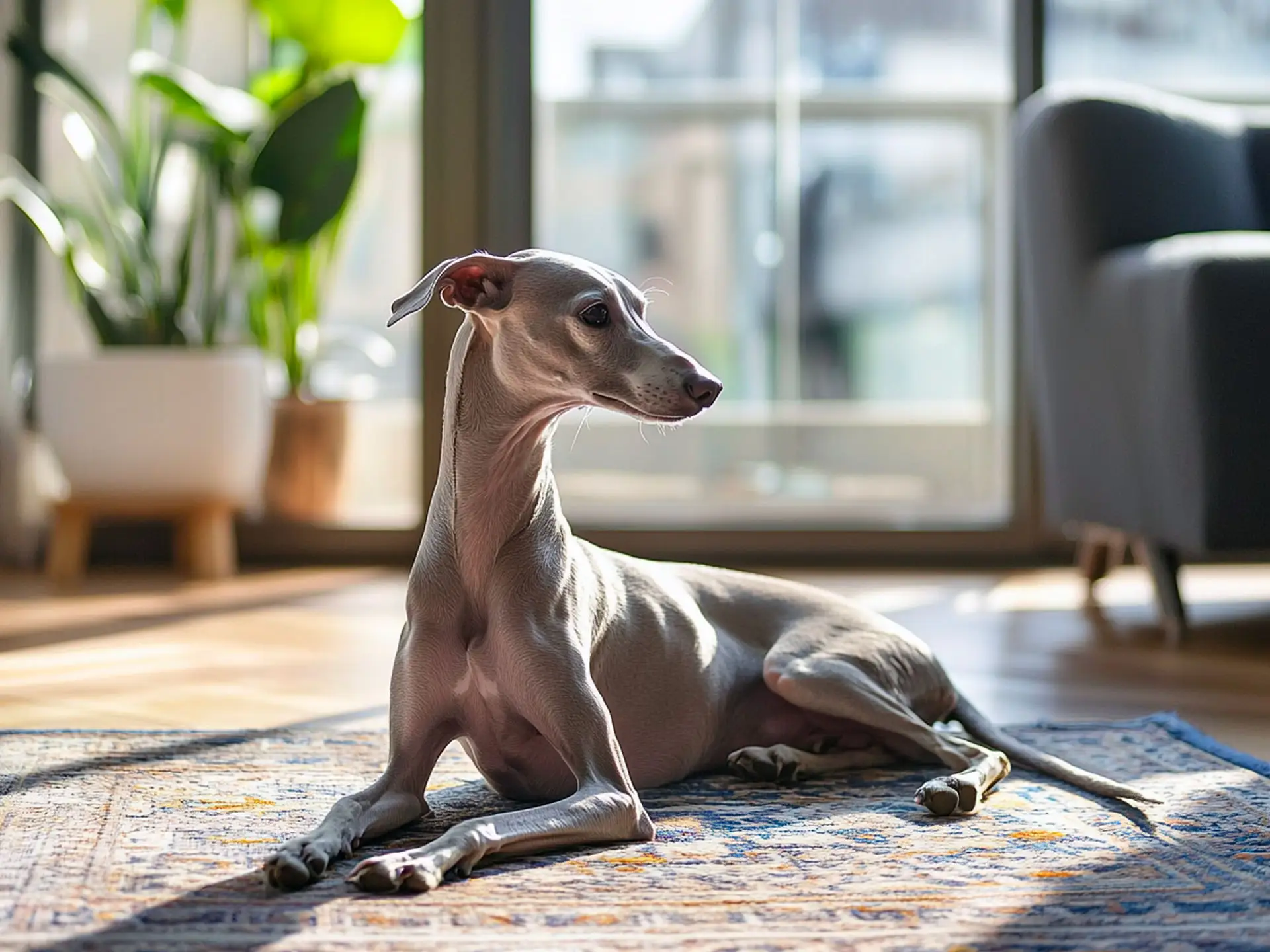
Despite their reputation as racing dogs, Greyhounds are calm, gentle, and surprisingly low-maintenance indoors. They love short bursts of activity followed by long naps, making them ideal for relaxed households.
| Pillar | Score | Why it matters |
| Trainability | 4 | Responds well to patient, positive training methods |
| Calmness | 5 | Extremely relaxed indoors, often described as “couch potatoes” |
| Impulse Control | 4 | Can be trained to resist chase instincts with supervision |
| Adaptability | 4 | Adjusts well to apartment or suburban life |
| Low Nuisance Behaviors | 4 | Rarely destructive, low barking tendencies |
Why They Rank High:
Greyhounds are affectionate and love spending time with their families. Their gentle temperament and quiet nature make them perfect for calm households seeking an easygoing companion.
Best For: Apartments, quiet families, owners wanting a low-energy indoor dog
Potential Challenges: Needs supervision outdoors due to natural chase instincts
8. Newfoundland

Nicknamed “gentle giants,” Newfoundlands are patient, calm, and affectionate. They are known for their sweet nature and excellent behavior with children.
| Pillar | Score | Why it matters |
| Trainability | 4 | Learns commands steadily, eager to please |
| Calmness | 5 | Naturally relaxed and tolerant |
| Impulse Control | 4 | Steady temperament even in busy households |
| Adaptability | 4 | Fits well in family settings with space |
| Low Nuisance Behaviors | 4 | Minimal barking, rarely destructive |
Why They Rank High:
Newfoundlands are often described as nanny dogs because of their calm and protective nature. They enjoy family life, are rarely aggressive, and thrive on human companionship.
Best For: Families with children, spacious homes, owners seeking a patient, loyal companion
Potential Challenges: Large size requires adequate space and care
9. Havanese
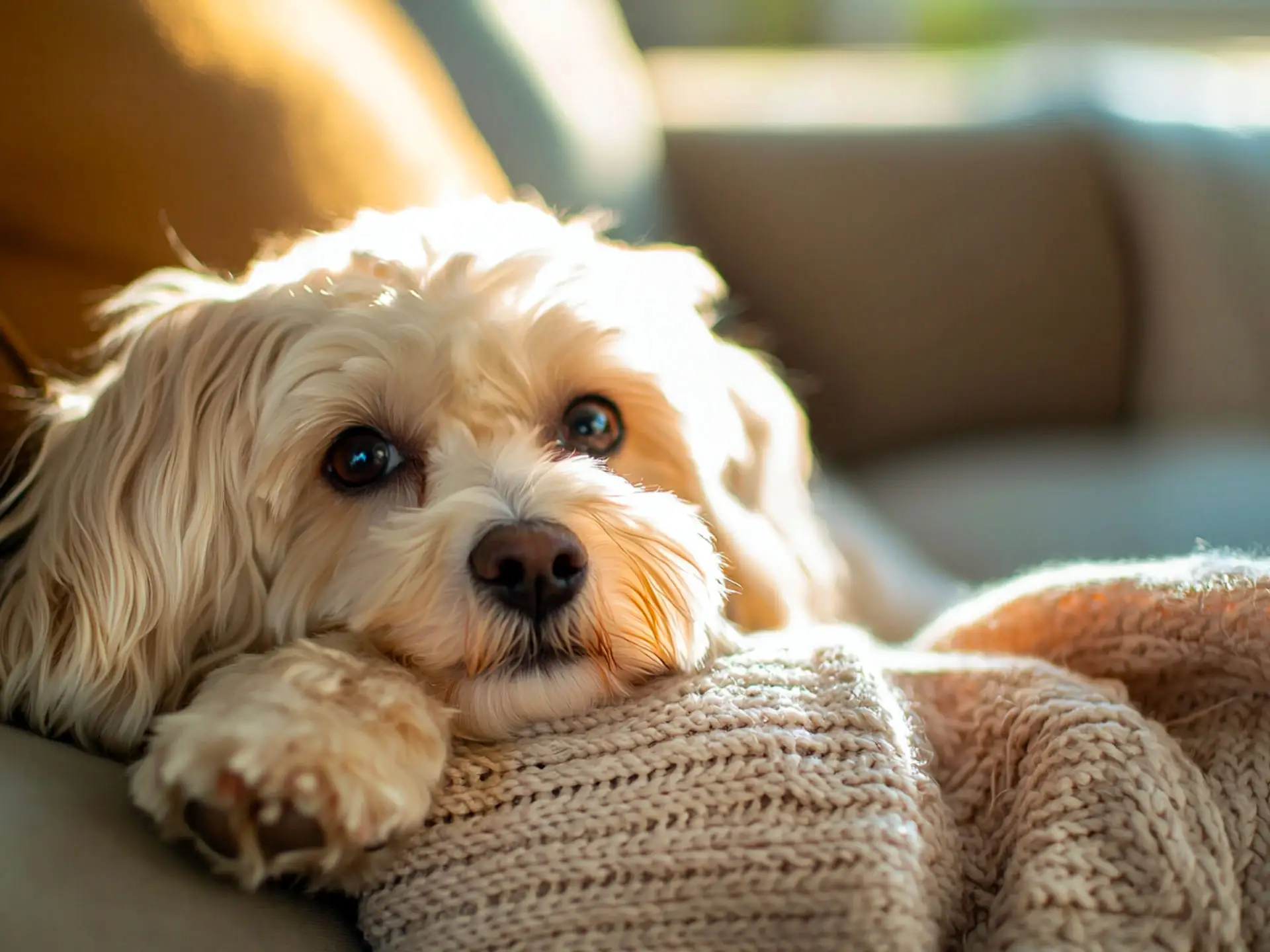
Havanese are small, friendly, and adaptable, making them ideal companions for families and city dwellers alike. Their affectionate temperament pairs well with a natural eagerness to please.
| Pillar | Score | Why it matters |
| Trainability | 4 | Quick learners with gentle, positive training |
| Calmness | 4 | Relaxed indoors, enjoys family time |
| Impulse Control | 4 | Naturally polite when socialized early |
| Adaptability | 5 | Thrives in apartments or homes with yards |
| Low Nuisance Behaviors | 4 | Rarely barks excessively if trained early |
Why They Rank High:
Havanese dogs combine a cheerful personality with good manners. They are affectionate lap dogs who still enjoy playtime but rarely become hyper or destructive.Best For: Apartments, families, retirees wanting a small, affectionate companion
Potential Challenges: Can develop separation anxiety without company
10. Shih Tzu
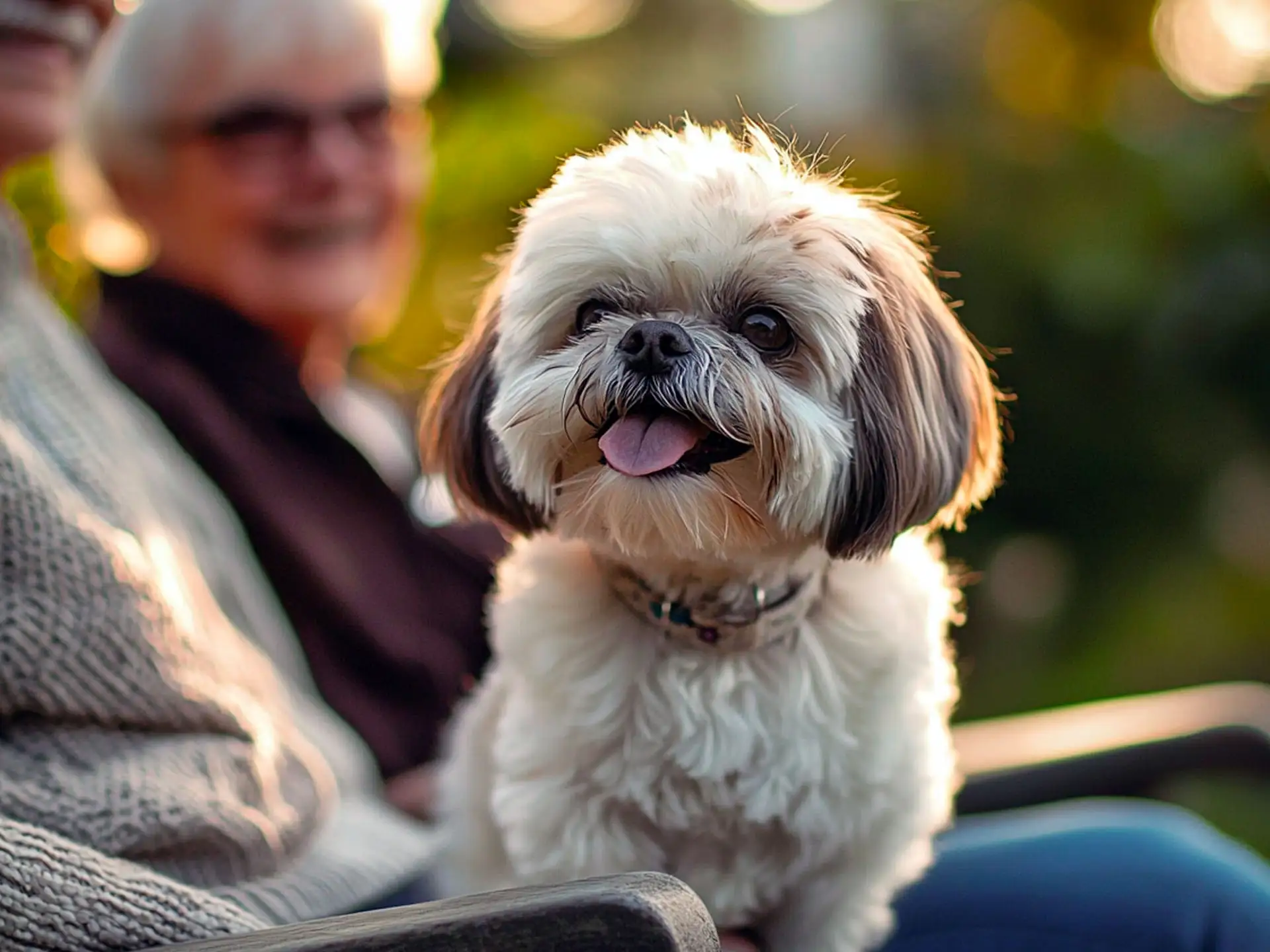
Shih Tzus were bred to be companion dogs, and it shows in their affectionate and easygoing nature. They adapt well to calm households and enjoy spending time with their owners.
| Pillar | Score | Why it matters |
| Trainability | 4 | Learns commands steadily with consistency |
| Calmness | 5 | Naturally relaxed and quiet indoors |
| Impulse Control | 4 | Polite with early socialization and training |
| Adaptability | 4 | Fits small apartments or suburban homes |
| Low Nuisance Behaviors | 4 | Minimal barking and rarely destructive |
Why They Rank High:
Shih Tzus are affectionate, calm, and perfect for people who want a small, low-maintenance companion. They love family life and thrive on attention without being overly demanding.
Best For: Apartments, retirees, families seeking a small, gentle dog
Potential Challenges: Needs regular grooming for a healthy coat
11. Irish Setter

Irish Setters are friendly, energetic, and trainable with the right guidance. They combine enthusiasm with a willingness to please, resulting in well-behaved companions when exercised properly.
| Pillar | Score | Why it matters |
| Trainability | 4 | Learns commands well with positive reinforcement |
| Calmness | 4 | Relaxed indoors after exercise |
| Impulse Control | 4 | Improves steadily with consistent training |
| Adaptability | 4 | Fits active families and outdoor lifestyles |
| Low Nuisance Behaviors | 4 | Rarely destructive if physical needs are met |
Why They Rank High:
Irish Setters combine playfulness with a cooperative spirit. They make excellent companions for families who enjoy outdoor activities and want a dog that settles well indoors afterward.
Best For: Active families, homes with space, owners seeking an affectionate companion
Potential Challenges: Needs daily exercise to stay calm indoors
12. Basset Hound
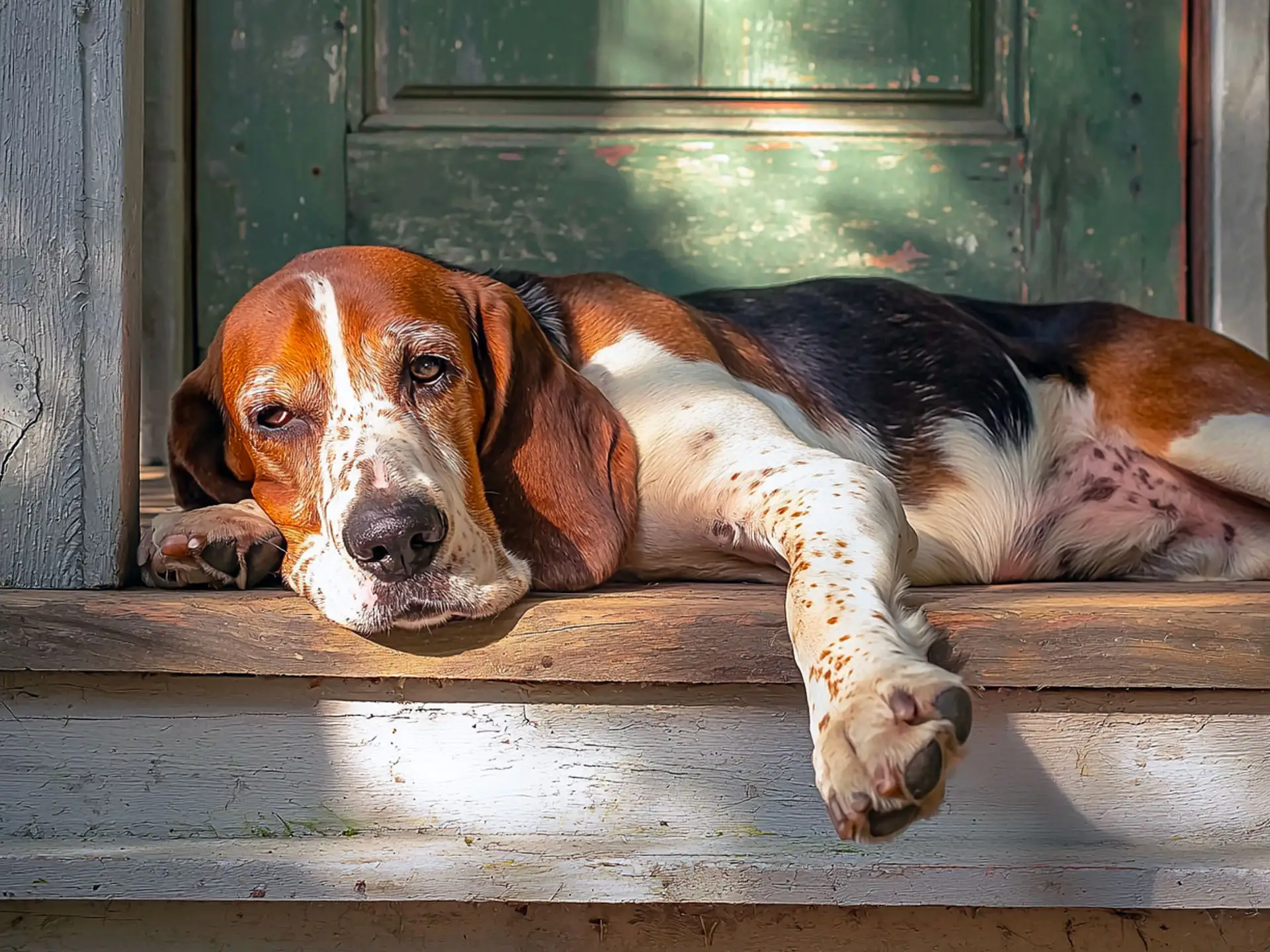
Basset Hounds are known for their laid-back personalities and calm demeanor. They are affectionate, gentle, and enjoy lounging with their families.
| Pillar | Score | Why it matters |
| Trainability | 3 | Independent nature requires patience |
| Calmness | 5 | Extremely relaxed, low-energy indoors |
| Impulse Control | 4 | Naturally mellow with minimal reactivity |
| Adaptability | 4 | Fits apartments or homes with yards |
| Low Nuisance Behaviors | 4 | Rarely destructive, moderate barking tendencies |
Why They Rank High:
Despite their stubborn streak, Basset Hounds are remarkably calm and affectionate. With patience in training, they become low-maintenance companions who enjoy quiet family life.
Best For: Apartments, families seeking a relaxed, easygoing dog
Potential Challenges: Independent nature can make training slower than average
How to Raise a Well-Behaved Dog
Even the most naturally calm and trainable dogs need the right environment and guidance. These five habits help any dog reach its best behavior potential.
1. Start Early with Socialization
Introduce your puppy to new people, places, and sounds before 16 weeks of age. Positive early experiences help prevent fear-based behaviors later in life.
2. Use Positive Reinforcement
Reward good behavior with treats, praise, or playtime. Dogs learn faster and form stronger bonds when training feels fun and rewarding.
3. Provide Mental and Physical Exercise
A tired dog is a well-behaved dog. Combine daily walks with puzzle toys or obedience games to prevent boredom-driven behaviors like chewing or barking.
4. Be Consistent with Rules and Routines
Dogs thrive on predictability. Keeping consistent mealtimes, bedtimes, and house rules helps them feel secure and well-behaved.
5. Consider the Canine Good Citizen (CGC) Program
This American Kennel Club certification teaches real-world manners and obedience skills, giving owners a clear training path toward polite behavior.
FAQs About Well-Behaved Dogs
What does “well-behaved” mean in a dog?
A well-behaved dog responds to basic commands, remains calm indoors, shows good manners around people and other pets, and avoids nuisance behaviors like excessive barking or chewing when its needs for exercise and mental stimulation are met.
Are calm dogs always easier to train?
Not always. Calm breeds may be less hyperactive, but trainability also depends on intelligence, eagerness to please, and early socialization. Some energetic dogs learn quickly because they are highly motivated and enjoy training sessions.
Which breeds bark the least?
Breeds like the Basenji, Greyhound, and Cavalier King Charles Spaniel are known for barking less than average. However, training, exercise, and socialization often matter more than breed alone when it comes to controlling nuisance barking.
Can mixed breeds be better behaved than purebreds?
Yes. Behavior depends on training, socialization, and temperament more than breed labels. Many mixed-breed dogs excel in obedience classes and make calm, well-mannered companions when raised in supportive environments.
How much does training affect behavior compared to breed?
Training often matters as much as, if not more than, breed. Even naturally calm breeds can develop bad habits without guidance, while high-energy breeds become polite companions with consistent training and clear routines.
Final Thoughts
Finding the best behaved dog breed is not just about choosing from the top of a list. It is about matching a dog’s temperament, energy level, and training needs with your lifestyle. A calm and polite companion comes from the right combination of breed tendencies, early socialization, consistent training, and a loving environment.
The breeds in this guide are among the most well-mannered when their physical and emotional needs are met, but every dog is an individual. Focus on creating a stable routine, using positive reinforcement, and choosing a breed that truly fits your family, home, and daily schedule.
If you are still unsure which dog might be the best fit for your life, try our Dog Breed Selector to get personalized recommendations based on your lifestyle and preferences.

